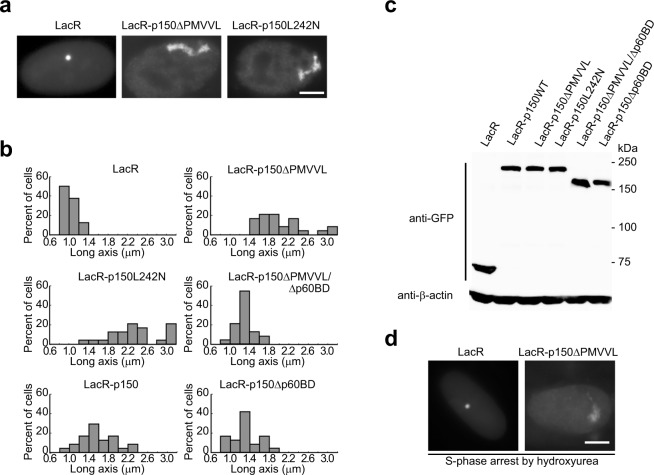Figure 6.
Targeting of p150 mutants defective in HP1 interaction leads to large-scale decondensation of the transgene array. (a) Cells were transfected with plasmids as indicated, and the transgene morphology was analyzed by fluorescence microscopy. Example images of cells transfected with plasmids encoding EYFP-LacR, EYFP-LacR-p150ΔPMVVL or EYFP-LacR-p150L242N. (b) Quantitative measurements of the long axis of transgene arrays marked by EYFP-LacR fusion proteins (n = 24). The bars corresponding to over 3 µm in long axis represent the percentage of transgene arrays larger than 3 µm. (c) Immunoblotting of EYFP-LacR fusion proteins using the anti-GFP antibody, with endogenous β-actin as a loading control. (d) Cells were transfected with the plasmid encoding EYFP-LacR or EYFP-LacR-p150ΔPMVVL. At 4 hours after transfection, cells were treated with hydroxyurea (2 mM) for 24 hours, then the transgene morphology was analyzed by fluorescence microscopy. Scale bar, 5 µm.

